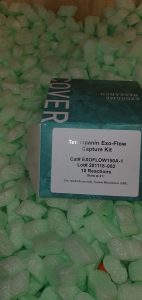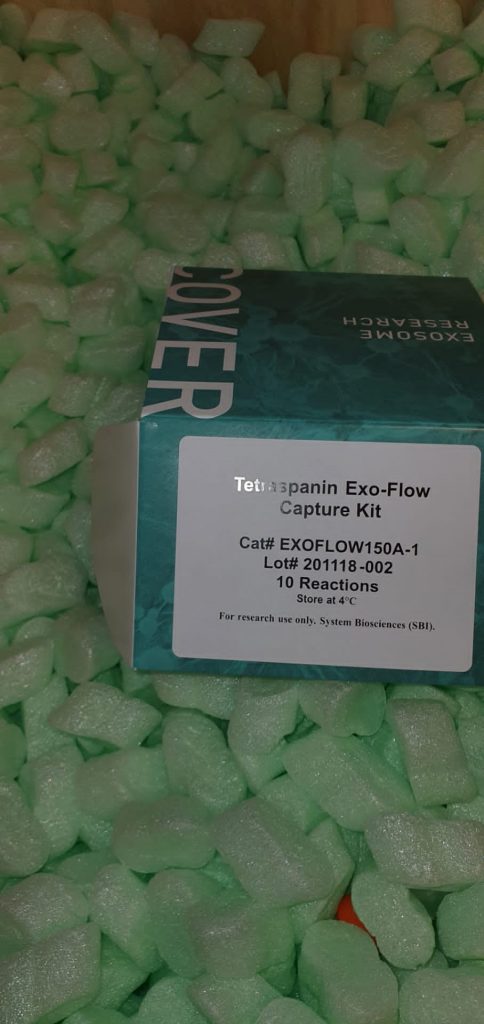The clinical efficacy of DNA cytology test (CY) in gastric cancer (GC) has been retrospectively proposed utilizing cancer-specific methylation of the Cysteine dioxygenase sort 1 (CDO1). We confirmed its clinical utility of DNA CY in a potential cohort. Four hundred GC samples had been prospectively collected for laundry cytology (UMIN000026191), and detection of the DNA methylation of CDO1 was assessed by quantitative methylation particular PCR in the sediments. Endpoint was outlined because the match fee between typical CY1 and DNA CY1 (diagnostic sensitivity), and the DNA CY0 fee (diagnostic specificity) in pStage IA.
DNA CY1 was detected in 45 circumstances (12.5%), whereas CY1 was seen in 31 (8.6%) in 361 chemotherapy-naïve samples, the place each sensitivity and specificity of the DNA CY in the peritoneal options had been 74.2% and 96.5%. The DNA CY was optimistic for 3.5/0/4.9/11.4/58.8% in pStage IA/IB/II/III/IV, respectively (P < 0.01).
In the multivariate evaluation, DNA CY1 was independently correlated with pT (P = 0.0012), feminine (P = 0.0099), CY1 (P = 0.0135), P1 (P = 0.019), and CEA (P = 0.036). The mixture of DNA CY1 and P issue nearly coated the potential peritoneal dissemination (P1 and/or CY1 and/or DNA CY1)(58/61: 95.1%). DNA CY1 had a considerably poorer prognosis than DNA CY0 in GC sufferers (P < 0.0001). DNA CY1 detected by CDO1 promoter DNA methylation has an ideal worth to detect minimal residual illness of the peritoneum in GC clinics representing poor prognosis as a novel single DNA marker.
Predictive means of fine-needle aspirate cytology for incompletely resected mast cell tumor surgical websites
The objective of this study was to consider whether or not fine-needle aspirate cytology of a earlier surgical web site was predictive of recurrence for incompletely excised mast cell tumors (MCTs). Electronic medical data had been looked for canines recognized with MCTs; these with histologically confirmed, incompletely resected MCTs evaluated by scar aspiration cytology inside 60 days after surgical procedure had been included for evaluation. Variables had been in contrast between teams utilizing Fisher’s precise test and logistic regression.
Twenty-nine cutaneous and seven subcutaneous tumors had been evaluated. Local recurrence, confirmed by both histopathology or cytology, occurred in 13.8% of circumstances. No important variations had been recognized for any variables aside from surgical web site cytology standing. The unfavorable predictive worth of surgical web site aspirate cytology with out residual mast cell tumor was 93.5%, with an total predictive accuracy of 88.9%. For the canines evaluated in this report, surgical web site aspiration cytology was predictive of native illness management for incompletely resected MCTs.
Salivary gland lesions: diagnostic reliability and challenges of advantageous needle aspiration cytology
Fine needle aspiration cytology (FNAC) is a invaluable, secure and broadly used methodology for preoperative diagnosis of salivary gland lesions. The diagnostic accuracy of FNAC depends on the standard and yield of the aspirate, in addition to the expertise and data of the cytopathologist. 247 circumstances of FNAC of salivary gland lesions had been carried out in our 4-year retrospective study. FNAC diagnoses had been divided into non-neoplastic lesions, benign and malignant neoplasms.
Histopathologic affirmation was achieved in 101 circumstances. The circumstances with discrepancies between the FNAC and histopathologic outcomes had been reviewed to set up attainable causes for discordance. The measures of diagnostic validity of FNAC in diagnosing non-neoplastic, benign and malignant lesions had been evaluated. Of the 247 FNAC samples, 135 circumstances had been recognized as benign neoplasms, 15 as malignant neoplasms, and 97 as non-neoplastic lesions.
Out of the 101 circumstances with histopathologic affirmation, discordant outcomes between cytologic and histopathologic diagnosis had been noticed in 15 circumstances. Our study confirmed no false optimistic and Four false unfavorable outcomes for cancer.

Cystic presentation of a lesion was a typical motive for diagnostic pitfall. Sensitivity of FNAC in varied varieties of salivary gland lesions ranged from 75%-100%, specificity 81-100%, diagnostic accuracy 85-96%, PPV 31-100% and NPV 60-96%. FNAC is a extremely delicate and particular methodology for diagnosis of most salivary gland lesions. Despite the truth that histopathology stays the gold customary, preoperative FNAC ought to be thought-about for preliminary investigation. Due to the diagnostic pitfalls, FNAC ought to be used in conjunction with clinical data, bodily examination, and radiologic findings to attain the correct diagnosis.
Comparison of Liquid-Based Cytology and Conventional Papanicolaou Smear for Cervical Cancer Screening: An Experience From Pakistan
Introduction After the introduction of cervical cancer screening program with cervical cytology, a marked decline in deaths secondary to cervical cancer was noticed in developed nations. Two strategies are used for cervical cytology. The first one is the traditional Papanicolaou (PAP) and the second is liquid-based cytology (LBC). Although varied research in western nations established the function of LBC in cervical cancer screening, no large-scale study was carried out in our inhabitants to evaluate the 2 methods for cervical cancer screening.
Therefore, in this study, we in contrast the diagnostic utility of these two methods for detecting cervical epithelial lesions. Methods A complete of 3,929 sufferers, who offered to the Gynecology Clinic, Liaquat National Hospital, for cervical cancer screening from January 2015 till December 2019, over a interval of 5 years, had been included in the study. A complete of 1,503 specimens had been ready by LBC, and a couple of,426 specimens had been ready by a traditional PAP smear methodology.
All smears had been interpreted utilizing the Bethesda System of Reporting Cytopathology. Results The imply age of the sufferers was 39.46±11.14 years. For cytological analysis, 98.7% of specimens had been sufficient. The inadequacy fee was 1.3% for typical PAP smear and 1.2% for LBC. While 97.2% of specimens had been reported as unfavorable for intraepithelial lesion or malignancy, 1.1% of specimens confirmed squamous epithelial lesions.
There was a major distinction in the detection fee of squamous epithelial lesions utilizing the 2 methods. The detection fee of squamous intraepithelial lesions utilizing LBC was 2.1%, which was increased than that of the traditional PAP smear (0.6%). The detection charges of glandular lesions utilizing LBC and traditional PAP smear had been 0.5% and 0.2%, respectively.
[Linking template=”default” type=”products” search=”Wright for Cytology EMMO-GEN STAINING” header=”3″ limit=”156″ start=”3″ showCatalogNumber=”true” showSize=”true” showSupplier=”true” showPrice=”true” showDescription=”true” showAdditionalInformation=”true” showImage=”true” showSchemaMarkup=”true” imageWidth=”” imageHeight=””]
Conclusion We discovered the next illness detection fee of squamous epithelial lesions utilizing LBC in contrast to typical PAP smear. Therefore, we suggest a widespread use of LBC for mass cervical cancer screening in our inhabitants.

